Public Culture in the Time of COVID
As part of IICS 605 coursework, the MAIIC class (September ’20 cohort) undertook this project under Professor Wendy Leeds-Hurwitz. The project examines how various public culture institutions responded to the COVID-19 pandemic by creating content across multiple digital media platforms as a way to reach their public despite their public not being able to physically visit them.
In all, the class examined 28 public culture institutions across the globe. Here is a synthesis of these results, focusing on the highlights.
Countries Covered in the Project
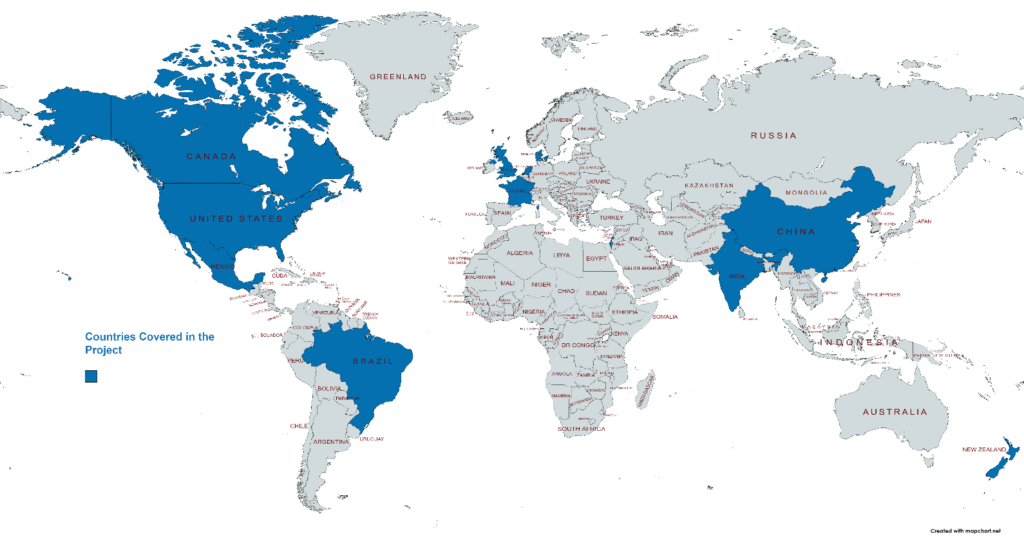
The cohort covered examples from countries around the world, including Canada, the United States, Mexico, Brazil, the UK, the Netherlands, France, Denmark, Israel, India, China, Hong Kong, and New Zealand.
Type of Public Culture Institutions
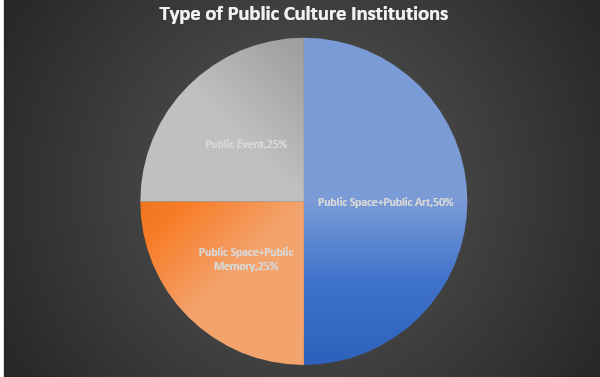
There were four different “elements of culture” that students could pick from: public space, public memory, public art, and public event. The majority of students chose public art.
Social Media Platforms Used by Public Culture Institutions
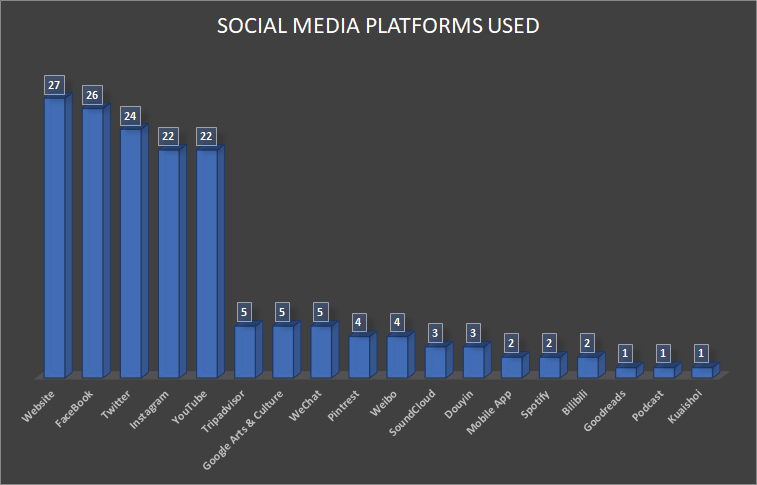
Institutions around the world predominantly used Facebook, followed by Twitter, and then YouTube and Instagram as a tie. Less popular channels include Trip Advisor, Google Arts and Culture, WeChat, and Pinterest.
Digital Initiatives that Generated Many-to-Many Communication
Institutions used a variety of different communication styles, including one-way (posting information for the audience to consume), two-way (engaging with the audience and hoping that they will respond) and many-to-many (where audience members can communicate amongst themselves). Many-to-many seemed to be most effective, where institutions used their social media platforms to engage their audience, and as a result, their audience shared information with their own followers.
- Museum of Art of Sao Paulo invited many-to-many communication as it initiated multiple drawing challenges. The Museum posted images from its ongoing exhibitions on Instagram and asked its followers to participate by sharing their own drawings/ artworks inspired from them.
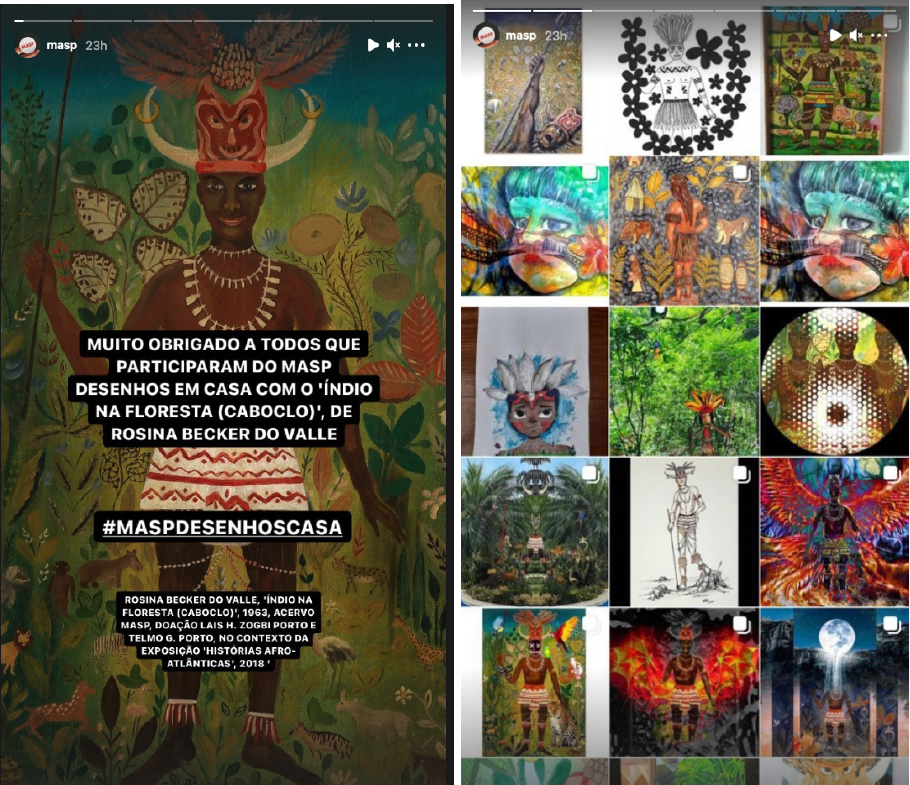
Image source: Instagram Stories
- Metropolitan Museum of Art successfully initiated many-to-many communication through social media challenges like #MetTwinning on Instagram and #MuseumBadHairDay on Twitter. The museum also launched Met Stories, a web-based initiative that showcased unexpected and compelling stories from the people who have visited the museum in the past – allowing ordinary people to share what the institution means to them.
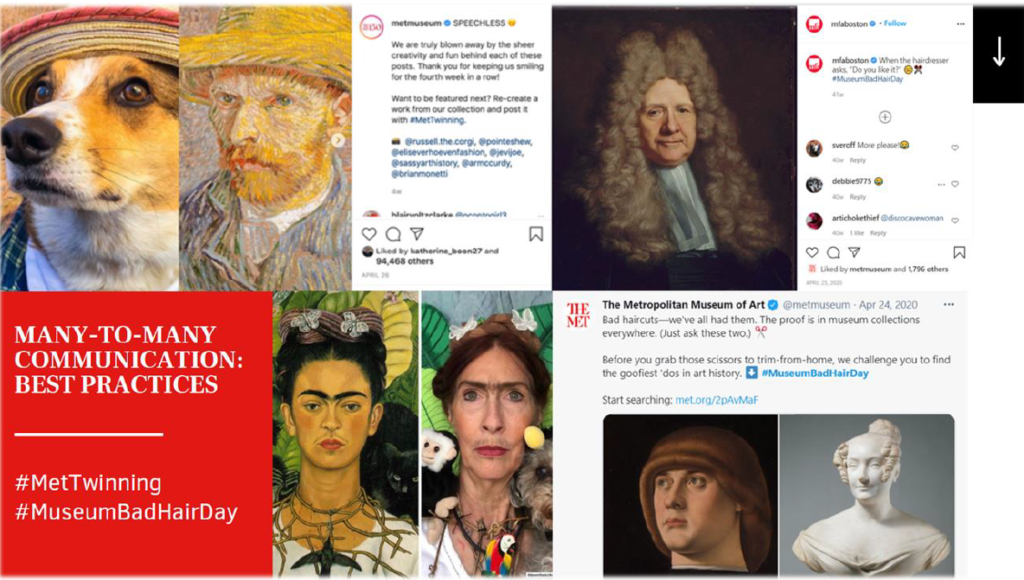
Image source: Instagram; Twitter
- National Center for the Performing Arts (NCPA), China used Bilibili, a Chinese social media platform, to stream and playback some of its content from its 13th Anniversary event. One of the performances, Li Bai (Li Bai was the greatest poet in ancient China), received more than 200,000 views, nearly 1,000 comments, over 3,000 reposts and bullet screens (live commenting).
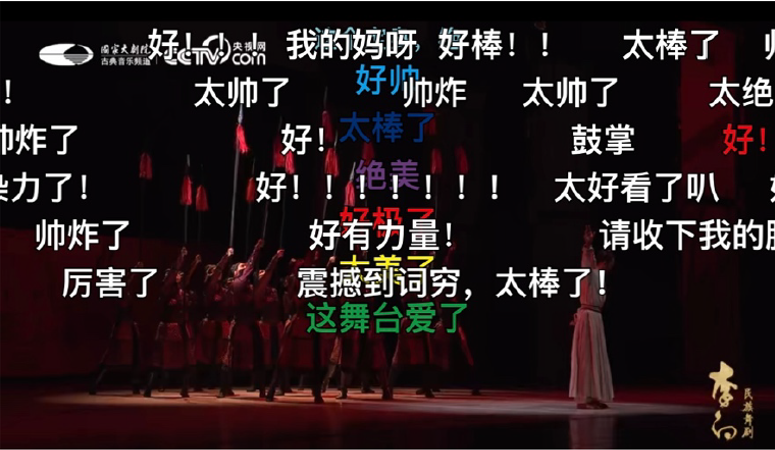
Screenshot from NCPA Bilibili
- Yad Vashem continued with its digital media initiative #IRememberWall, which was started around Holocaust Remembrance Day in 2019. It allowed Facebook users to share identities of Holocaust victims from Yad Vashem’s Central Database. The museum’s followers shared victims’ pictures and names on their own Facebook wall with the #IRememberWall hashtag, which led to many-to-many conversations. A number of people also posted on their Instagram accounts. Overall, the museum received more than 165,572 responses and posts from around 242 countries.
In another similar initiative, the organization asked its followers to recite the names of the Holocaust victims and share the video on their social media platforms with the following hashtags: #RememberingFromHome and #ShoahVictims. A number of people posted these videos on Facebook, Twitter, and YouTube, which were compiled and shared on Yad Vashem’s website and YouTube channel.
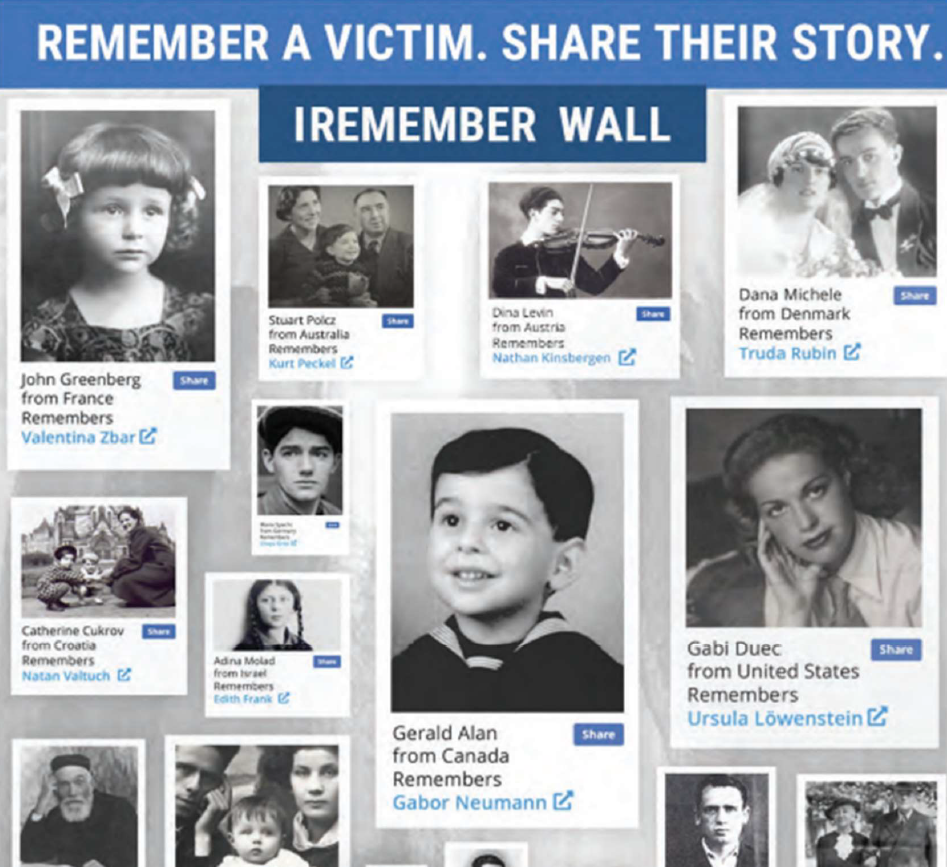
Image source from Facebook
Other Digital Media Initiatives
- Scholastic Canada created virtual book fairs to reach their audience during COVID-19 and used social media to promote them and interact with their audience.
- The Roskilde Festival used Facebook, Instagram, and Twitter to share music videos of various artists and to connect with wider and more diverse international audiences. The festival also staged a competition around creating its iconic “Orange Stage” on the app, which was later used to showcase live recordings of the artists.
- Sundance Film Festival in its 2021 virtual edition developed a “New Frontier Platform”, which allowed its attendees to live-stream movies using virtual reality/augmented reality and online avatars. The platform gave access to virtual waiting rooms, live performances, virtual backgrounds, panel talks, live question & answer sessions, and screening schedules.
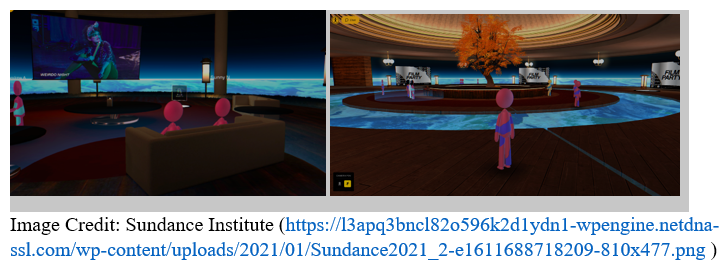
- Royal Tyrrell Museum’s website managed to engage its fans by allowing them to download coloring pages, an online puzzle, and fun Zoom backgrounds.
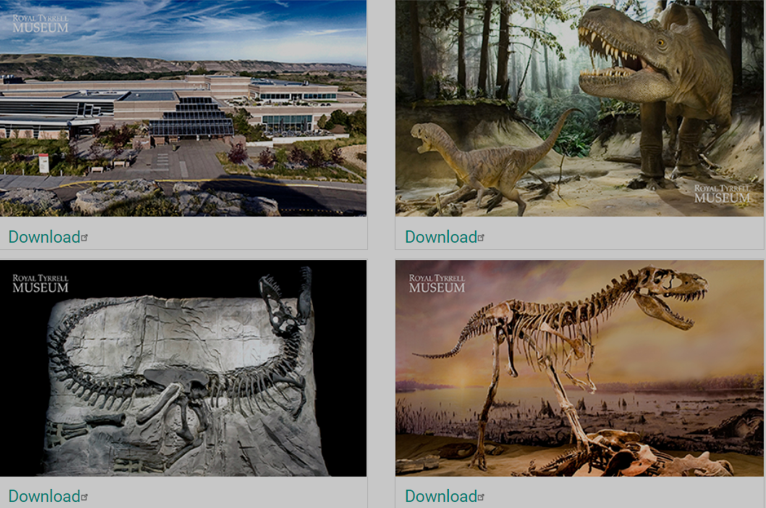
Image source: RTMP FROM HOME | Royal Tyrrell Museum
- The Palace Museum used the Chinese social media app Douyin to do its first live streaming in April 2020. The app allowed the public to experience the Forbidden City at a time when they could not access it physically. Its staff took the opportunity to introduce and explain a number of key locations to its viewers and interacted with them via comments. The video reached over 9.6 million people!
- National Gallery of Modern Art launched a digital initiative, “NGMA KE SANGRAH SE” (from the collection of NGMA) to showcase the rarely seen and unseen artworks from its collection during the lockdown.
- Anne Frank House launched Video Diaries in March 2020 which are video adaptations of Anne Frank’s written diary. These video clippings have received millions of views on YouTube so far.
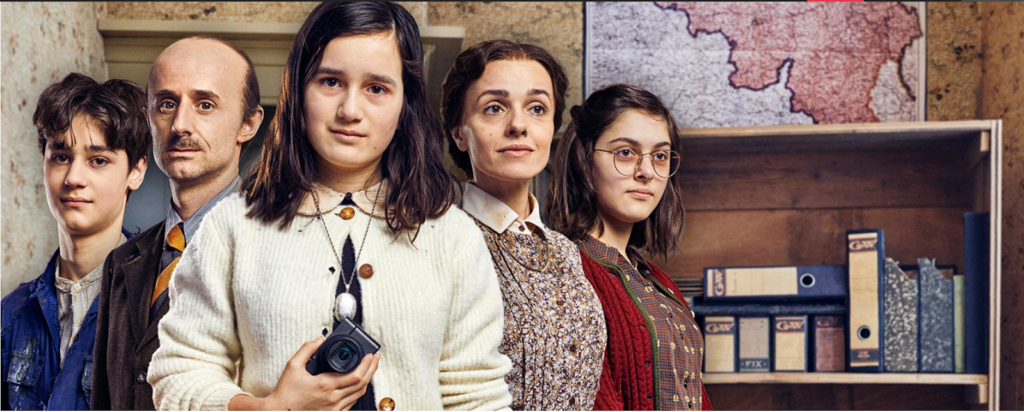
Image source: Anne Frank House
- White Cube art gallery used Spotify to provide its users with curated playlists from the artists, which they can listen to while viewing the online art exhibits.
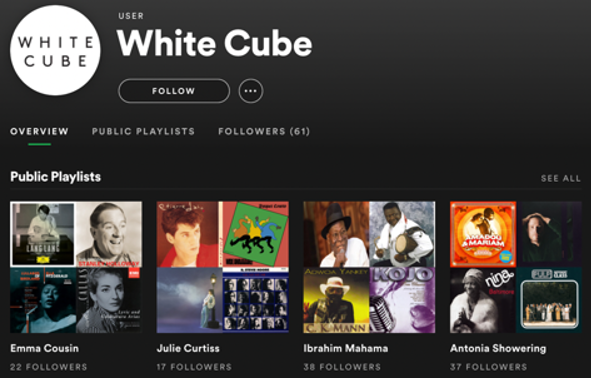
A screenshot from White Cube’s Spotify playlist, 2021
- The Jumex Foundation started hosting Mini Domingo (Mini Sunday) via Facebook Live, an initiative aimed at engaging the younger audiences. Kids, along with their parents, attended these live sessions to enhance their understanding of arts and crafts and learn about different artists.
- Boiler Room is an online broadcasting, party, and festival organization. They launched their playlist titled “STREAMING FROM ISOLATION: Transmissions from our fundraising lockdown series” during the pandemic. It reached millions of followers through different social media platforms and successfully brought music and performances from different cultures and scenes onto the international stage.
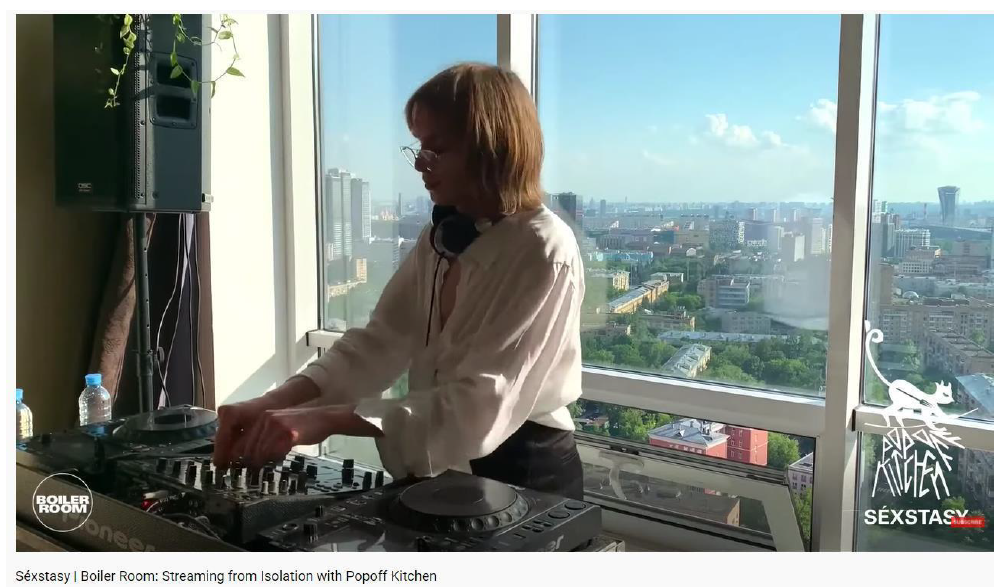
Image source: YouTube
- Tate Modern initiated separate platforms and a website for children to deliver synchronous and asynchronous art classes. They used appropriate linguistic choices to engage with them and deliver information and an immersive art experience. They also developed an online application called “Tate Paint”, which allowed children to create art online. Their works were further shared with an online community on the Tate Kids website.
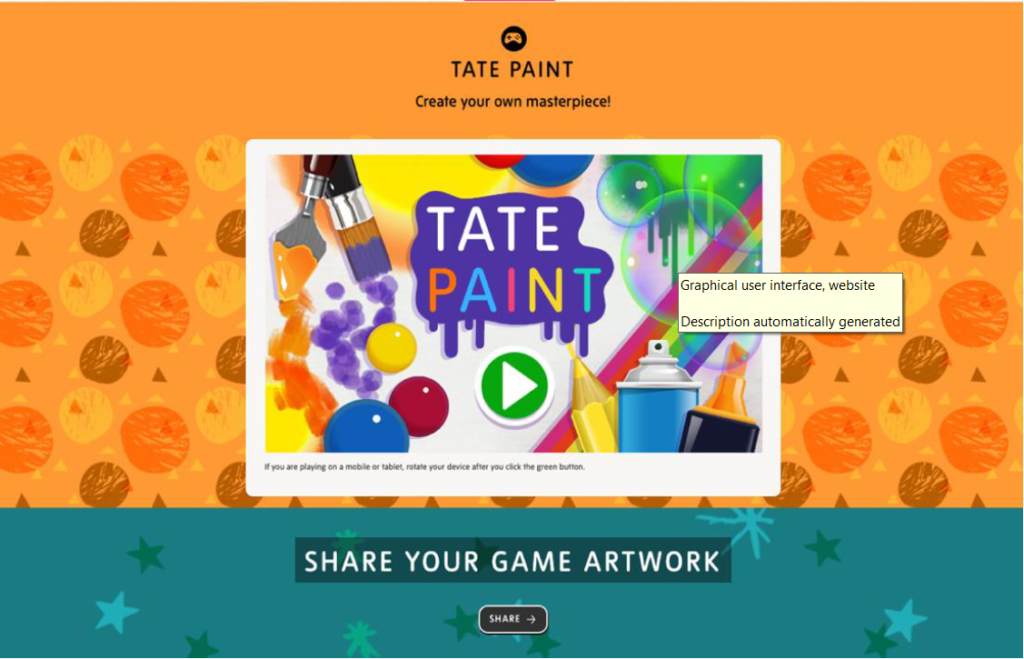
Image source: Tate
- M Woods launched an online exhibition “Art Is Still Here: A Hypothetical Show for a Closed Museum” at the very beginning of the pandemic, on February 13, 2020, to ensure that art remained accessible to people even during lockdown. The Museum invited more than 50 artists and art institutions from all over the world to participate in the exhibition. It hosted a number of workshops and events which were streamed on WeChat and Weibo, and which managed to engage art enthusiasts across China.
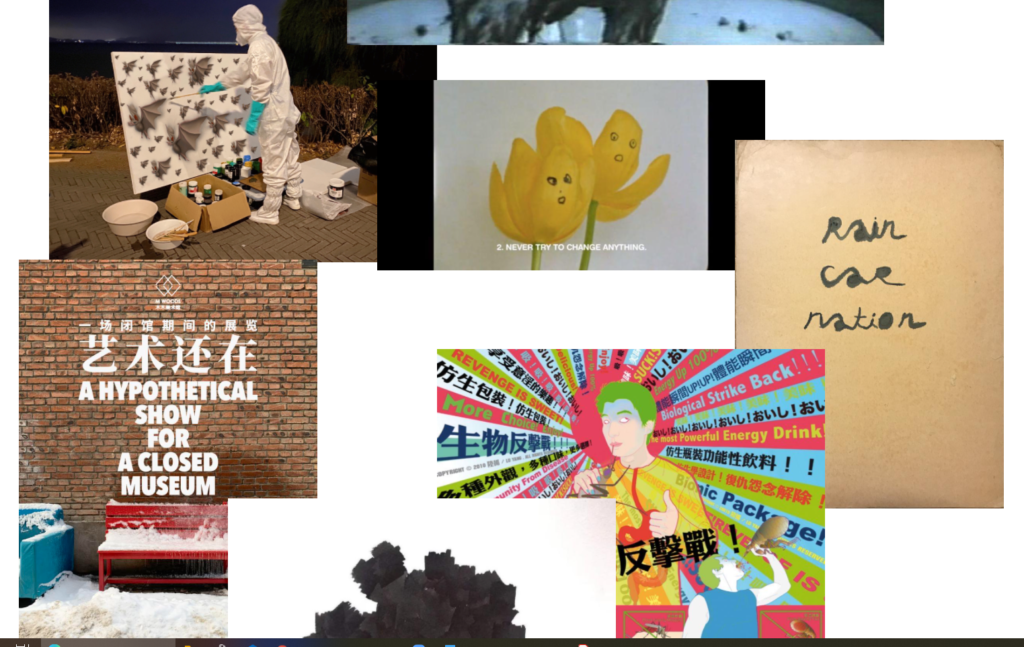
Image source: M Woods
Conclusion:
These best practices allowed the institutions to connect with their audience despite the closure of their physical spaces throughout the pandemic. The examples above are not an exhaustive list but are some highlights of effective tactics that other institutions can emulate for the future. These practices will likely continue beyond the pandemic, too.
To view all of our cohort’s examples, click here.

